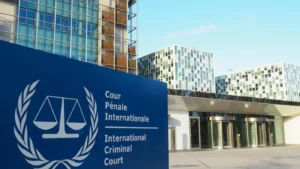MAYOR BLOOMBERG ANNOUNCES CITY’S PLANS FOR NEW HURRICANE SANDY RECOVERY INITIATIVES TO BE FUNDED WITH $1.8 BILLION IN FEDERAL GRANTS
FOR IMMEDIATE RELEASE
February 6, 2013
No. 52
First Round of Community Development Block Grants Will Fund Eight New City Initiatives to Rebuild Homes and Businesses and Strengthen Infrastructure
Mayor Michael R. Bloomberg today announced that New York City plans to spend its initial allocation of $1.77 billion in Community Development Block Grants to address the most urgent housing, business and infrastructure needs in the neighborhoods hardest hit by Hurricane Sandy through eight new programs. The new programs fall into three categories of immediate need: housing recovery, business recovery and infrastructure resiliency. The housing recovery initiatives include rehabilitation grants for single-family homes, rehabilitation grants for multi-family homes and grants for resiliency efforts in public housing. The business recovery initiatives are grants for resiliency measures, expanded loans and grants for businesses, and a competition for innovations in resiliency technologies. The infrastructure resiliency initiatives are a competition for game-changing initiatives in neighborhoods and a competition for utilities to make resiliency investments. The Mayor made the announcement at City Hall where he was joined by Deputy Mayor for Operations Caswell F. Holloway, Deputy Mayor for Economic Development Robert K. Steel, Director of Housing Recovery Operations Brad Gair and Seth Pinsky, Senior Advisor to the Mayor and Director of Mayor’s Special Initiative for Rebuilding & Resiliency.
“These funds will help New Yorkers who were the hardest hit by Sandy get back on their feet and help communities build back stronger and smarter,” said Mayor Bloomberg. “This allocation is evidence of the great cooperation we’ve had in responding to and recovering from Sandy from every branch and arm of the Federal government.
The City’s eight new programs fall into three categories:
Housing Recovery – $720 Million
- Single-Family Rehabilitation: $350 million to establish a grant program for up to 9,300 homeowners whose residences were sustained damage as a result of Hurricane Sandy and need additional funding to restore their homes, implement resiliency measures and remediate mold. Will assist up to 1,000 low-, moderate- and middle-income one- and two-family homeowners whose primary residences were destroyed or had major damage, and 8,300 low-, moderate- and middle-income homeowners whose primary residences were damaged but not destroyed.
- Multi-Family Rehabilitation: $250 million to fund programs to enhance the resiliency of up to 12,790 units of housing for low-, moderate- and middle-income New Yorkers damaged by Sandy that still require significant resources to permanently address damage and resume sustainable operations. The City’s program will provide grants and low-interest loans, depending on need and scope.
- Public Housing: $120 million to address initial resilience measures for public housing developments, such as permanent emergency generators at key buildings to provide backup power to critical building systems.
Business Recovery – $185 Million
- Business Resiliency Investments: $100 million to provide grants to up to 1,300 businesses. $100,000 per company will go to small- and mid-sized companies, and $1 million per company will go to large companies in vulnerable areas. Program will require companies to commit to reinvest in their New York City presence.
- Expanded Loans and Grants: $80 million to provide loans and grants to as many as 1,000 businesses. This program will provide expedited low-interest loans of up to $150,000 on similar terms to the City’s existing emergency loan program; provide expedited grants of up to $60,000 to affected businesses; and invite community development finance institutions to compete in a business plan competition to solicit ideas for additional loan and grant programs which would then be funded on a pilot basis, with the best program(s) then funded at scale.
- Innovations in Resiliency Technologies Competition: $5 million to allocate, through “Race-to-the-Top”-style competitions, grants to the most innovative and cost-effective ideas for demonstration projects featuring resiliency products and technologies that can be replicated citywide.
Infrastructure Resiliency – $140 Million
- Neighborhood Game-Changer Investment Competition: $100 million to jump-start economic activity in the five Business Recovery Zones by allocating, through “Race-to-the-Top”-style competitions, grants to the most innovative and effective investment ideas for spurring long-term economic growth. Possible ideas could include attraction of growing companies and/or companies of significant size, attraction of companies that serve the needs of underserved populations, or other transformative investments in key corridors.
- Critical Utility Infrastructure Resiliency Competition: $40 million to allocate, through “Race-to-the-Top”-style competitions, grants to the most innovative and cost-effective resiliency measures identified by the utilities for their critical networks. Grants will be allocated to utilities in one or more of the following categories: i) liquid fuel networks; ii) other energy networks (power, steam, natural gas); and iii) telecommunications networks (wires and wireless).
“Since Sandy struck, we have done a lot to help those who were hardest hit get critical services and return to their homes. But the hardest work remains ahead of us,” Deputy Mayor Holloway said. “With this federal assistance, we will restore neighborhoods, re-open businesses, and better protect our coast and coastal communities from the dangers of climate change.”
“In the months since Sandy hit, Mayor Bloomberg has worked tirelessly to use every available resource to help residents and businesses recover as quickly as possible – via the Housing Recovery Office, Rapid Repairs, and our emergency loan and grant program that has made nearly $10 million available to businesses to reopen and recover,” Deputy Mayor Steel said. “With this initial allocation of federal funding, we will further accelerate the work of recovery and begin to make critical investments in resiliency to protect against future storms. We appreciate the leadership and partnership of HUD and Secretary Donovan and look forward to continuing to work closely with him and his team.”
“With this first $5.4 billion allocation, the work it took to pass the Sandy aid bill is starting to pay off,” said Senator Charles E. Schumer. “We know there is desperate need and anxious waiting in the places hit by the storm, and we will be making sure that this money gets to homeowners, small business and communities as quickly as possible.”
“This assistance builds on the City’s earlier business recovery programs, providing a critical boost to impacted companies as they recover from the effects of Hurricane Sandy,” said New York City Economic Development Corporation President Seth W. Pinsky. “Thanks to Secretary Donovan and our partners in the federal government, we will now have even more resources to help those in the hardest-hit areas get back on their feet, and to help those in vulnerable areas citywide to repair and strengthen our buildings and infrastructure. Working together, we are ensuring that New York City and its economy will emerge from this challenge stronger for the future.”
“These federal funds give us the flexibility to solve many of the housing problems created by Sandy with a mix of innovative programs that will help residents in a direct and meaningful way, while also helping them protect their homes against a future storm,” said Brad Gair, Director of the Mayor’s Office of Housing Recovery.
“Focusing on repairing while simultaneously enhancing the long-term resiliency of the multi-family housing stock in the areas hardest hit by Sandy is of the highest priority,” said Housing Preservation and Development Commissioner Mathew M. Wambua. “This Block Grant funding will accelerate our efforts and play a critical role in providing owners with the financial resources they need to put their buildings back into good repair, and institute measures to ensure the mitigation of future storm damage. I thank the Mayor for his leadership and HUD for its partnership in helping to keep our city’s housing stock livable and sustainable.”
“Through the City’s Emergency Loan Fund and matching grant we have helped hundreds of small businesses impacted by Hurricane Sandy, but there is still much more to do,” said Rob Walsh, Commissioner of the NYC Department of Small Business Services. “This funding will provide a big boost for the City’s small businesses and commercial corridors still working to recover from Sandy.”
“NYCHA will use these funds to install back-up generators and other critical equipment above flood levels in over 100 of our buildings in low-lying areas, focusing on buildings with high concentrations of seniors and vulnerable residents,” said NYCHA Chairman John B. Rhea. “These upgrades will ensure that essential services such as elevators and emergency lighting are maintained during and after a storm.”
– 30 –
Contact: Marc LaVorgna/Julie Wood (212) 788-2958





